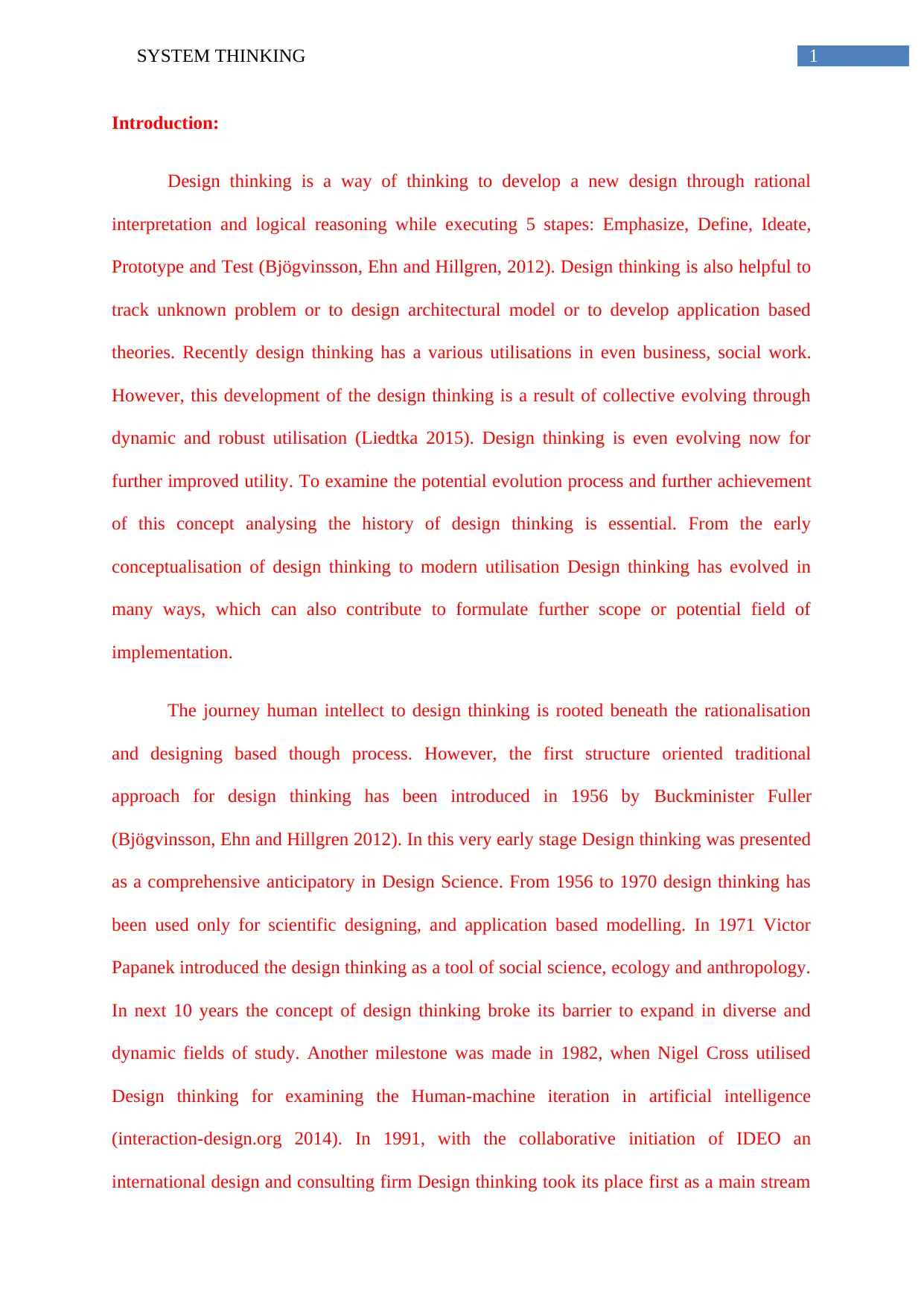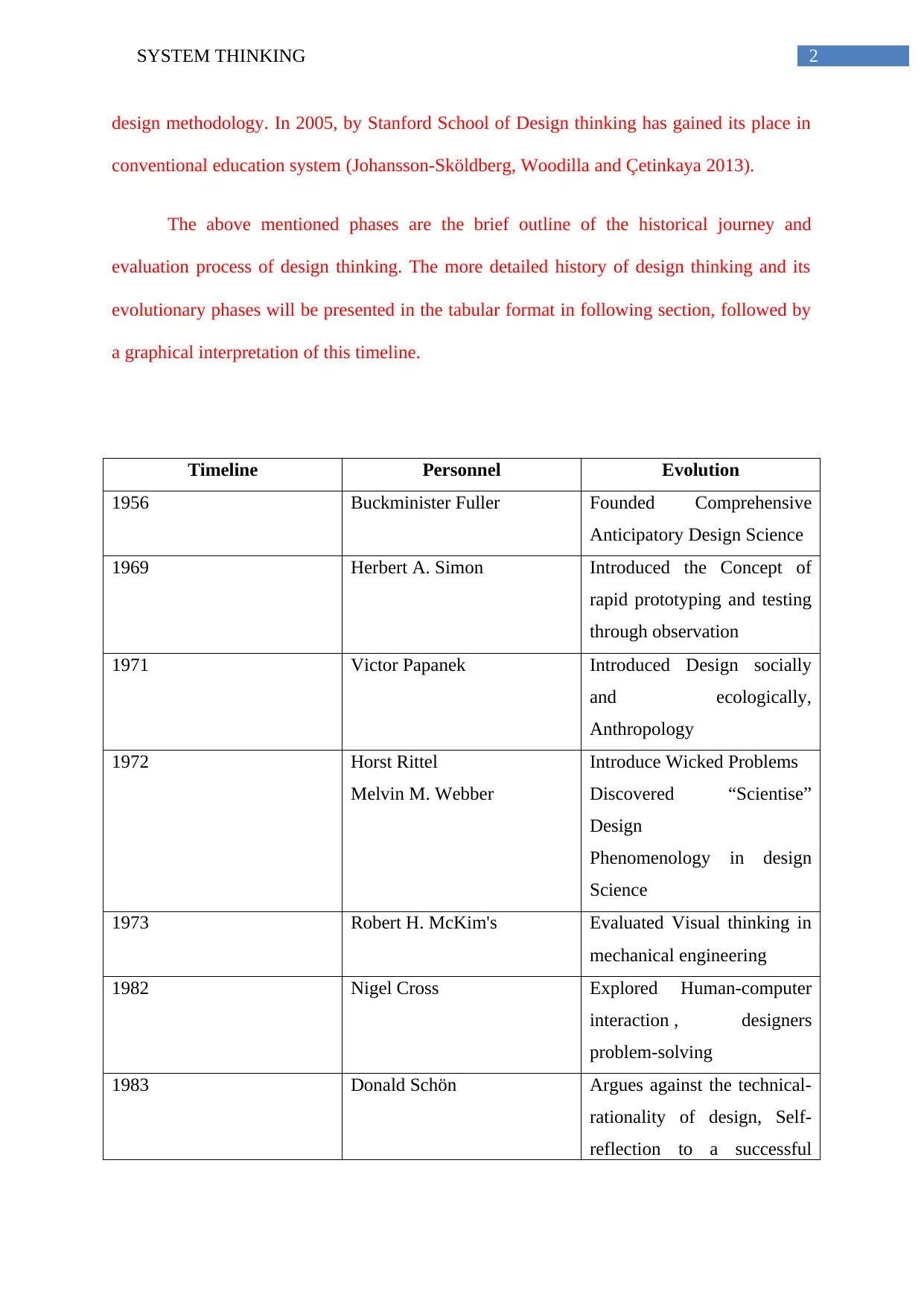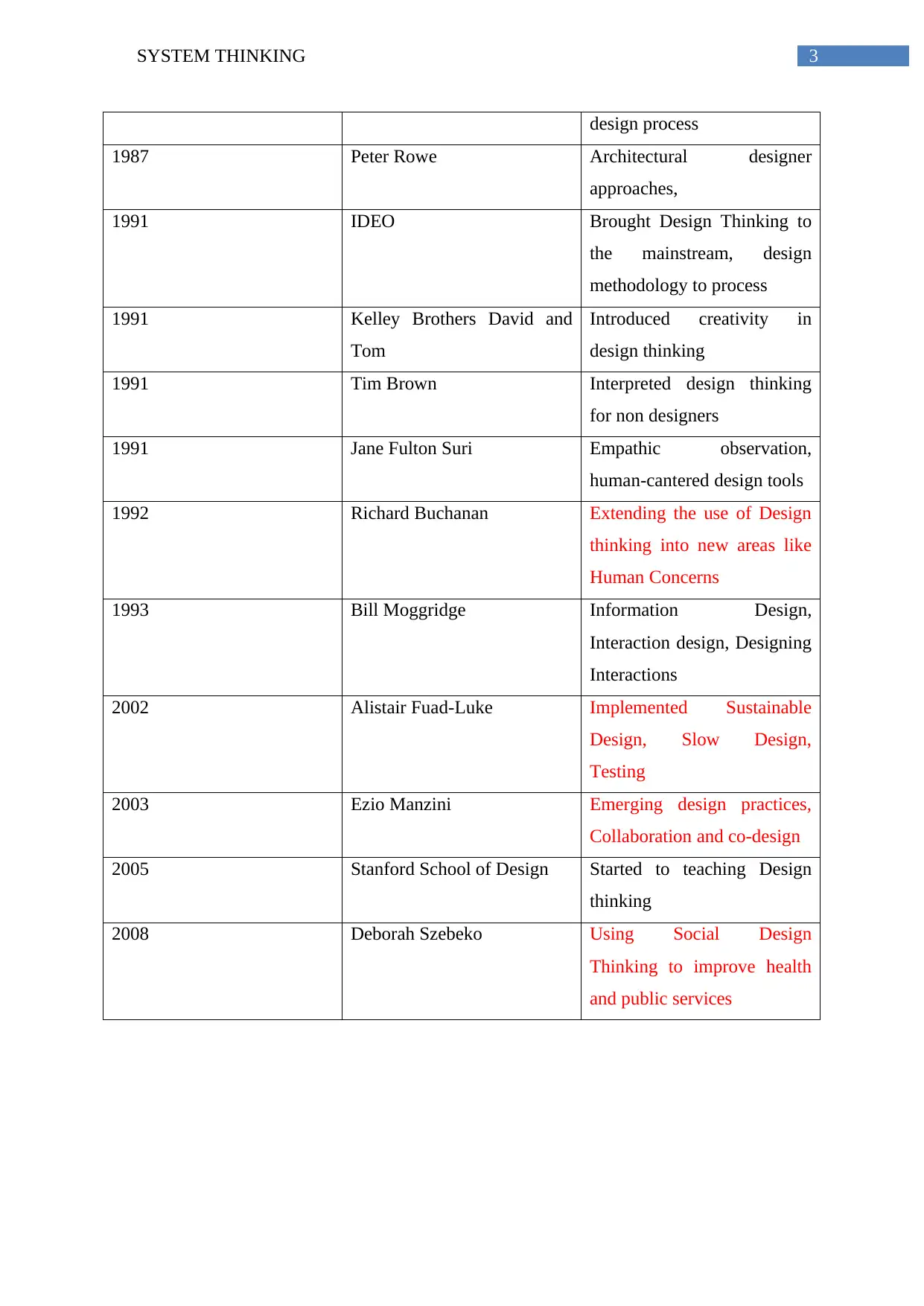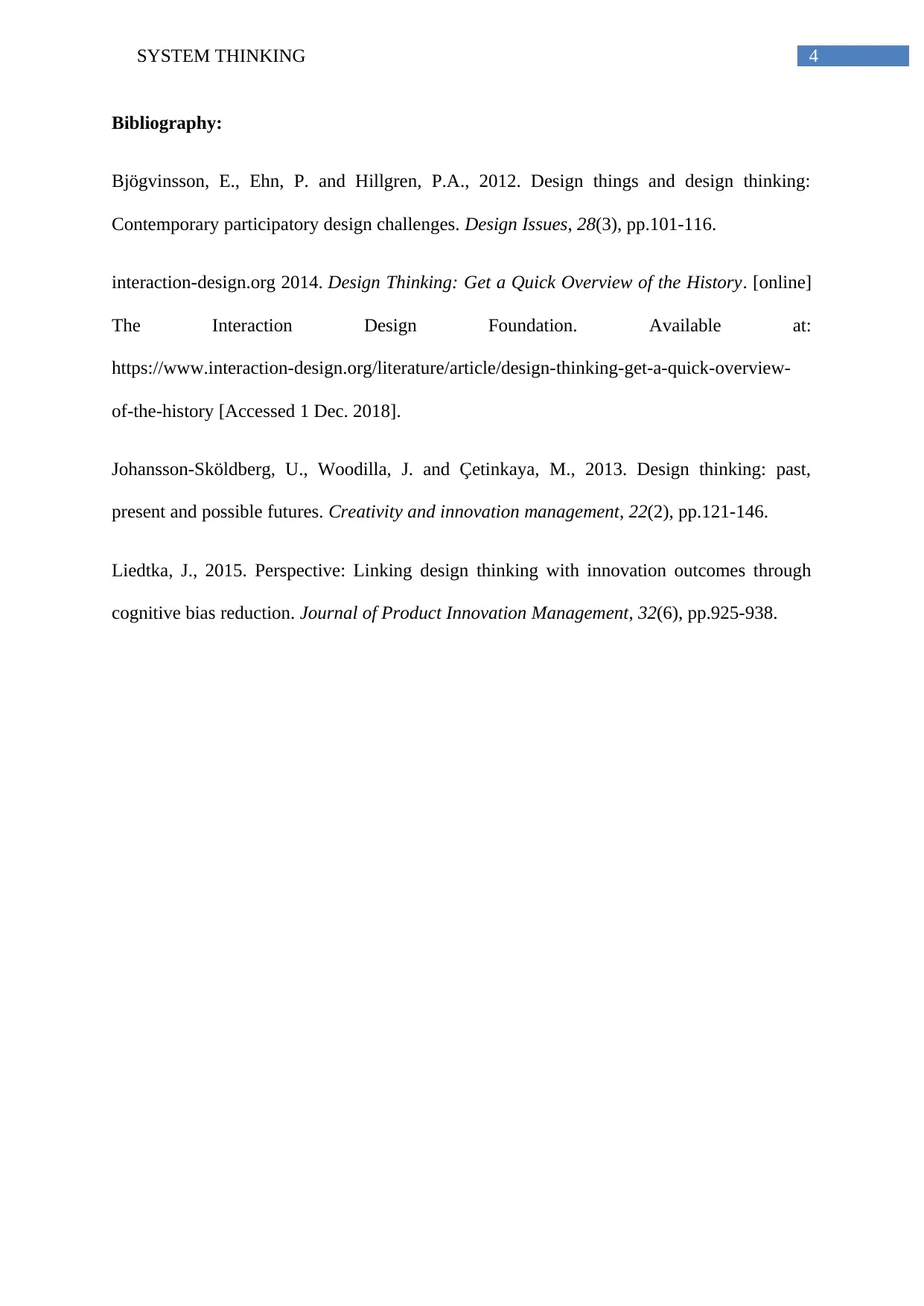Comprehensive Report: Evolution of System Thinking Concepts
VerifiedAdded on 2023/05/28
|5
|799
|317
Report
AI Summary
This report provides a detailed overview of the history and evolution of system thinking, tracing its origins from Buckminster Fuller's early conceptualization to its modern applications. It highlights key milestones, including the contributions of Victor Papanek, IDEO, and Stanford School of Design. The report presents a timeline of significant events and individuals, such as Herbert A. Simon, Nigel Cross, and Donald Schön, who shaped the field. It explores how design thinking has expanded from scientific and engineering domains to social sciences, business, and education. The report also emphasizes the evolution of design thinking as a mainstream methodology and its integration into academic curricula. Finally, the report includes a bibliography of relevant sources to provide a comprehensive understanding of design thinking's historical journey and its impact across various disciplines.
1 out of 5





![[object Object]](/_next/static/media/star-bottom.7253800d.svg)